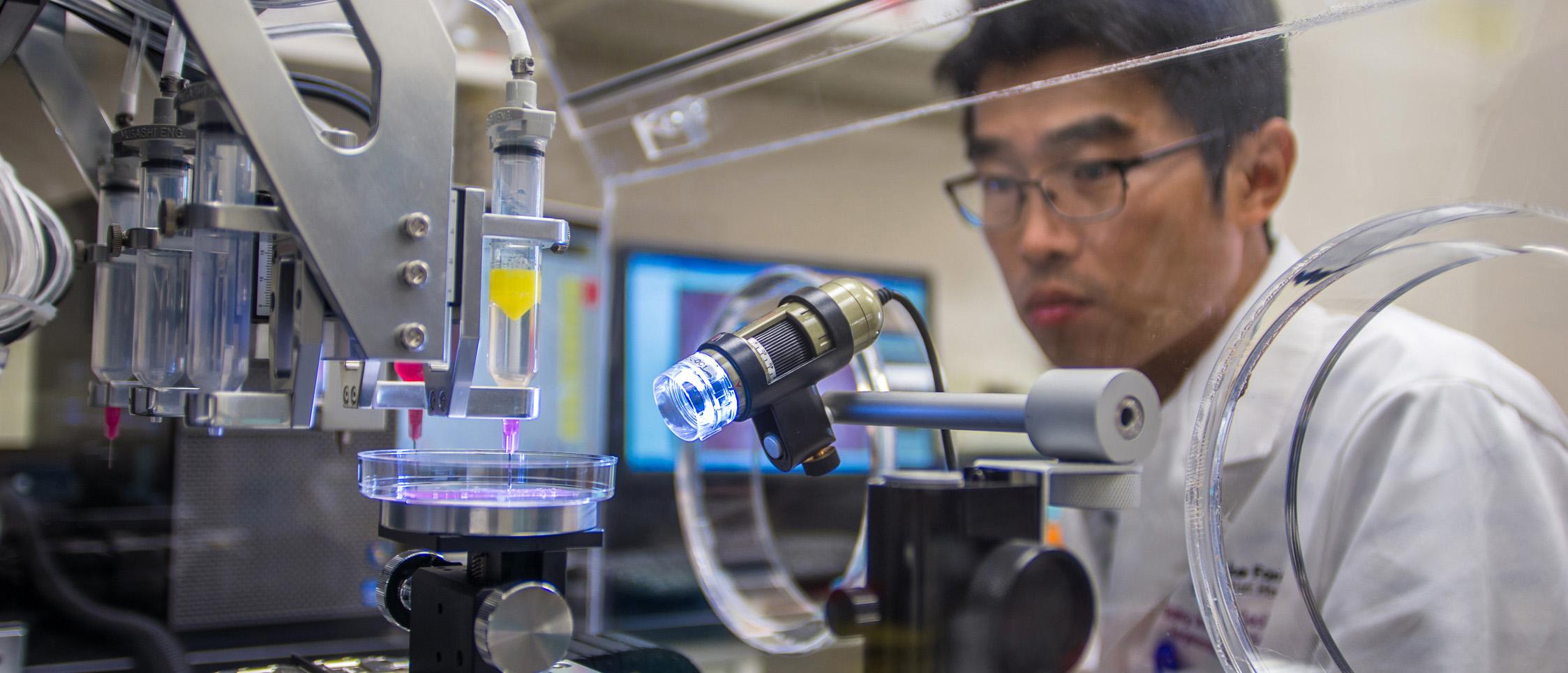Believe it or not, it is now possible to create totally functional 3D printed human skin. Recently, scientists from the Universidad Carlos III de Madrid, the Center for Energy, Environmental and Technological Research, and Hospital General Universitario Gregorio Marañón, in collaboration with the firm BioDan Group, have presented a prototype for a 3D bioprinter that can create totally functional human skin. The skin can be used in transplanting to patients and also for research and testing of cosmetic, chemical and pharmaceutical products.
So, before moving further let us first discuss what our skin is comprised of. Our skin consists of two layers: the epidermis and the dermis. The epidermis is protected by stratum corneum from the external environment. The dermis consists of fibroblasts that produce collagen, the protein that gives elasticity and mechanical strength to the skin. In this 3D bioprinter, bio-ink is used instead of polymer filament. When creating skin, injectors with biological components are used. Juan Francisco del Cañizo, of the Hospital General Universitario Gregorio Marañón and a Universidad Complutense de Madrid researcher said, “Knowing how to mix the biological components, in what conditions to work with them so that the cells don’t deteriorate, and how to correctly deposit the product is critical to the system.”
The bio inks are controlled by a computer, which deposits them in the print bed in an orderly manner. The process for producing these tissues has two approaches: for large scale industrial applications, allogeneic skin can be fabricated from a stock cell; and for therapeutic use, autologous skin can be fabricated step by step from the patient’s skin, such as in the treatment of severe burns.
The scientists said that they use only human cells and components to produce skin that is bioactive and can generate its own human collagen, thereby avoiding the use of the animal collagen that is found in other methods. The scientists are also researching ways to fabricate other types of tissues. This new technology is less expensive and skin can also be generated in an automated way. Alfredo Brisac, CEO of BioDan Group said, “This method of bioprinting allows skin to be generated in a standardized, automated way, and the process is less expensive than manual production.”
Currently, bioprinting of skin is in development phase and was approved by many health agencies so that it can be used efficiently for burn patients. Due to this invention, the research in pharmaceutical and cosmetic industries, which involve animal testing, can be carried out with these artificial skins instead of animals. With many scopes of application, this new invention initiated a new revolution in the field of bioprinting.


